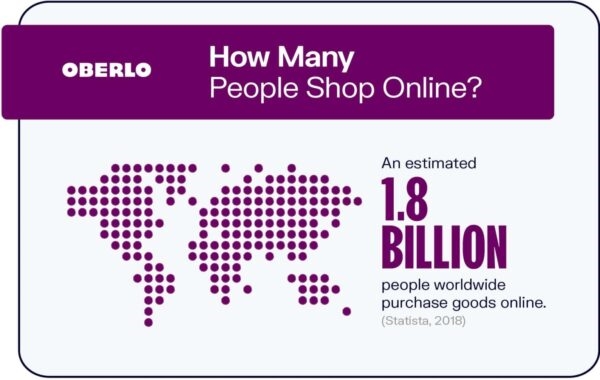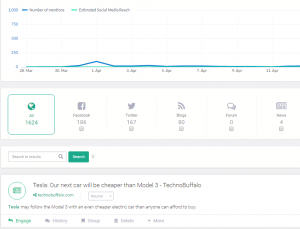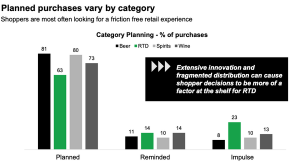Understandably, the distribution channel of a product — from the manufacturer to the end-user — has a lot of intricacies and politics, prominent among which is the hot topic: slotting fees.
The moral position of slotting fees has been a bone of contention among business scholars for decades — the pros and the antis.
If you take the high moral ground, you may agree with those who pronounce slotting fees unethical because it creates an entry barrier for small businesses with little budgets.
However, if you take a more rational position, you may come to terms with the fact that retailers aren’t trying to be mean for charging it.
For a retailer whose livelihood depends on the number of what goes off her shelf daily, putting an unknown, untested product on a shelf requires all the insurance she can get.
What else do you think will account for her loss should a product refuse to sell?
But with the magnificent opportunities that e-commerce provides, for how long are we going to keep debating the ethics of securing a shelf space?
Everything virtual is quickly replacing everything real, like electronic document management systems replacing large office files, or online learning platforms replacing real class. And the number of people shopping online is even more striking.

Why do manufacturers need shelf spaces in the first place? For the most part, it is to get discovered by shoppers.
Compared with online shopping, how much of such transactions happen in a brick-and-mortar store these days?
Now, don’t get me wrong. Physical shops are still very much alive. But when you consider that 5,500 brick and mortar stores close in 2018 and the number grew 23% in 2019, you know that the trend is shifting from brick-and-mortar.
Conversely, though, millennials, the generation with the biggest purchasing power, now make 54% of their purchases online. Even non-Millennials make 49% of theirs the same way.
What’s more, online shopping overtook general merchandise in the number of sales in 2019. And if this indicates anything, it shows that e-commerce is more than just a passing fad.
So, rather than keep waxing lyrical about the unethical nature of slotting fees, e-commerce provides a permanent solution to new manufacturers, namely: Direct-2-consumers.
In a layman’s term, open an online store.
The digitization of merchandise trade, otherwise known as e-commerce, frees you from the shackle of intermediaries, reduces purchasing cost, puts you in charge of your margin, and sometimes, eliminates the need to rent a physical store.
It isn’t rocket science. Over the years, we have seen real-life examples to know that turning to e-commerce isn’t only safe, but also lucrative and doable.
Away, an e-commerce company that sells travel accessories, and was valued at 1.4$ bn in 2019, is an example of D2C. This remarkable growth is courtesy of dealing directly with their customers.
Or consider Glossier, a chemical-free make-up cosmetics company that sells 100% of its goods through the online channel.
But temper your exuberance. While this might look like an easy getaway, there is so much work to be done if, as a manufacturer, you have chosen to tread the path of e-commerce.
If you are new to e-commerce, numerous articles exist on the web to walk you through the process.
But this article only aims to give you the foundational frameworks of D2C, the most basics yet the most powerful and indispensable recipes in your potion of success.
From brand positioning to pricing to shipping and fulfillment to choosing an e-commerce platform to marketing, this piece will unpack the fundamentals of e-commerce for manufacturers who want to go into D2C.
If you follow this blueprint, e-commerce will be so favorable you will never need to pay for slotting fees.
Let’s begin.
Identify your e-commerce goals.
Every business has a why, and so does every business strategy.
Before we get bogged down in the morass of things you should do to find your feet in the e-commerce world, let’s look into why you want to do this.
You are called to D2C in this piece because it frees you from the power plays of distribution channels which involves the irking slotting fees.
But one of the major advantages of taking your product to an online storefront is that it provides you with room for growth and puts you in charge.
Better put, your success depends — to no small extent — on how much effort you are willing to put in.
Now as a manufacturer, assuming you have chosen to leave the old way behind and use an e-commerce channel to take off, what are the goals that will inform and guide your decisions and strategies?
To that end, some questions can help you get those out of the way.
Take a look at the following questions:
- Do I have deadlines for my marketing target?
- Do I have the financial wherewithal to go after such targets?
- How far am I willing to go?
- What are my long-term goals for this business?
Try answering these four questions appropriately and let them guide you as you find and apply the right strategy for your e-commerce store.
Positioning and pricing strategy
Here begin our direct efforts at making sales.
The adoption process for any buyer follows a predictable path: from awareness to information search to alternatives evaluation to the very big purchase; every stage must be filled with benefits that drag prospects into one central goal: purchasing.
These days, comparing prices has become so easy, so easy as in a matter of opening your smartphone and checking products, their features, and their prices for comparison.
Unless your positioning and pricing are custom-made to deter your target market from competitors and focus their interest on you, then the two stages — information search and alternatives evaluation — are where most of your prospects will get buried.
Yet no matter what you do, almost all prospects will pass through this stage in the Internet world.
So, how do you go about this?
Before determining the price, start with a clearcut positioning. Bear in mind though that a lot of things go into determining your rate (as we will soon discuss), this is the most critical aspect of it.
Know what purpose you are selling in your product and be sure there is a market for it.
Each product taken to market is two products in the eyes of a consumer: the physical product and the functional product.
The functional product is what triggers their decision to purchase, and also whether the price you are putting on your product is worth it. And to trigger a purchase, only one function, out of many that make your product stand out, will do the magic.
Great sellers — marketers, copywriters, online marketers, and all that jazz — all agree on one thing: that after making a brackbreakingly good product, nothing in marketing surpasses perception.
Like sleight of hand, great marketers turn ordinary products into high-involvement ones. Commodities, at whom, ordinarily, buyers would have scoffed, become things for which premiums are paid.
As a new manufacturer trying to take the market by storm, you are like a small fish in a big pond. You have only one shot at making disruption and that’s by being disruptively remarkable.
Only after figuring out and devising your unique selling proposition (USP), that you have established the value you want your customers to pay for, should you start a journey into your pricing scheme.
Do not forget: in D2C, no one is cutting a margin from you before your product reaches a consumer.
Your calculation here, therefore, will only need to factor in your production cost, marketing cost, delivery cost, and then profitability — including all things relating to them.
That is why you need to do your homework. If your product must do well, then you’d better be sure it has a new slant.
Consumers don’t care about your struggles with shipping or making; they are buying for the function, the experience upon which your product’s success is predicated.
Shipping and distribution plan
Your product is up, and a USP has been developed, all waiting to go up in your online store, but your expenses aren’t complete unless you calculate your shipping cost.
If you aren’t entirely sure of your shipping cost, a very important angle of the equation is missing, it also means you can’t predetermine your overall costs and margins.
Shipping cost is, therefore, an indispensable consideration in the general planning of an e-commerce store.
When it comes to shipping rates, several things come to play. This involves package size, package weight, origin country, and destination country.
To choose the right option, you have to find a way to figure out how to cover the shipping cost. To do that, you’ll need to know your product’s position viz-a-viz your prospects.
Should you charge them separately for shipping costs? That will not be an option if they are hesitant to buy your product.
Or should you use a real-time carrier rate? The success of this depends on how much your customers are willing to pay to lay their fingers on your product.
As a manufacturer, a flat-rate might be a better option for you unless you have varieties of products you sell and the weights and sizes vary.
Local delivery is also a good option if you have a sizable target audience in close proximity, as this allows customers in your chosen areas to select “local delivery” as an option when checking out.
Don’t forget the timeliness of delivery in your shipping plans.
Calculating shipping costs
To accurately calculate your shipping cost, many shipping calculators exist to help you determine which will work best for you, depending on your location.
Below are some shipping calculators you should check out:
Canada Post – Shipping Calculator
UK Royal Mail – Shipping Calculator
Australia Post – Shipping Calculator
When calculating, do not forget that shipping costs are based on a variety of things that were mentioned earlier: package size, package weight, origin country, and destination country.
Determining your final price
As it is, this trade is between you, the courier, fulfillment house, and the end-user of your product. And given that you are always going to have to pay for some things and also make a profit, you must now bring all aspects of cost together to determine the final price.
Look at the dummy estimation below:
-
- Product – $
- Packaging – $
- Shipping – $
- Customs/Duties (if you cover them) – $
- Credit card fee – $
- Profit margin – $
By labeling each of these with their respective estimated costs, you can arrive at the right price for your product.
Some other things you may want to look at in addition to this are insurance and tracking, and fulfillment warehouse.
But by and large, those are the things you must put into consideration.
Choosing an e-commerce platform
It’s not as easy as just building a generic website and posting product images on it.
You must consider the many angles, or say functions, that make an e-commerce website an e-commerce website: ease of operation, user interface, payment gateways, marketability, cost-effectiveness, maintenance, integration with all other necessary software you will need along the line, and so on.
Also, are you going to build your site from the ground or use the ready-made e-commerce platforms?
But this is not a place for lengthy discussions on that. You can check this article on BigCommerce to see how to choose the right one for you.
Marketing strategy
You are a manufacturer who is trying to take control of your business, cut off intermediaries, and make a profit.
The generic marketing ideas you see every day will not work for you, instead you will need to be extremely selective on what kind of marketing you are going to use.
As such, I have identified four key marketing strategies you should try, each of them is useful in all stages of marketing you will pass through — creating awareness, stirring interest and desire, and compelling action.
Podcast shows
If you have been reading a lot about online marketing tactics before now, this appears an odd first choice.
But listen: on the Internet today, hardly does any platform have a more engaged audience as podcast show listeners. If you are looking to throw an ad that sticks to the mind of your prospects, you should do it using podcasts.
If you are on a blog post, all sorts of suggestions are popping up from every angle trying to make you read this, subscribe to that, or take this survey.
Or take social media as an example; all types of ads bamboozling you from all angles. Or take email marketing that’s fast losing its value, thanks to generic copies. The list goes on.
According to Acast, a podcast ad startup, 76% of UK listeners have acted on a podcast ad. Speaking on this subject, Neil Patel, in this piece, explains, “…because the text-based content doesn’t create a strong emotional connection between website visitors and you.”
That doesn’t mean others do not work, but I choose it as the first option because a new product needing awareness should go to where all the attention is.
And given the cutthroat nature of this environment, podcast shows are where you get that. If you are short on budget, check these podcast platforms out, some of them offer limited free podcasting hosting services.
SEO, SEO, SEO
Every day, billions of search queries occur on Google, each and every one of them looking to solve a unique problem.
Chances are, your product solves some of those problems. Hence, if you are not getting found on Google, you are missing a huge chunk of prospects.
So, what is SEO?
It means search engine optimization, a sort of free marketing strategy that allows your customers to find you organically on search engines by blogging.
The scope of this piece does not allow us to go deep into the nitty-gritty of search engine optimization, but the basics involve the following:
- Site architecture
- Keyword research
- Content marketing
- Onpage SEO
- Offpage SEO
- Local SEO
- Measurement
Social media promotion
This works, but I say it reluctantly.
Social media has become a hotbed for snake oil sellers and charlatans alike; everyone that knows how to spell a few words correctly and type in their smart card pin is selling something.
The audience you’d be targeting are overwhelmed, and social media platforms, especially Facebook, are introducing all sorts of community policies that are continuing to look like martial laws or curfews.
But all hope is not lost. The long-known secret of advertising is to stand out and be unimaginably good.
And given that business needs to make money to stay alive, social media promotions might be your only way of generating income for your business in the early days of it.
Hence, do not overlook social media promotions.
A few social media platforms with real, active audience you should pay attention to are below:
While they are not the same, let me also insert Google AdWords here since they are alike in a sense of Pay-Per-Click (PPC) as well as several other similarities they bear.
Affiliate marketing and Influencer marketing
As much as the audiences online are divided, niche bloggers have a huge loyal followers base with whom they have established trust.
A brand recommendation from them inspires trust. Hence, brands reach out to them to help them market their product and give them a commission whenever they refer a buyer.
An interesting thing about this kind of marketing is that you pay no affiliate marketer until a purchase is made, yet they sell your products with all the dedication of a paid employee because selling your product is a major source of revenue for them.
Conclusion
In an article I wrote for Business 2 Community about facing the post-COVID-19 economy, I spoke about how the environment has become extremely volatile, and how the big guys will become more ruthless in order to maintain their domination.
Speaking of funding, you stand very little chance or no chance at all. So, now, you want to go head to head with them in slotting fees?
Do not. Instead, practice D2C, go to e-commerce. A limitless number of opportunities await you there.
Can e-commerce solve the problem of slotting fees? This piece says yes.
Business & Finance Articles on Business 2 Community
(91)







